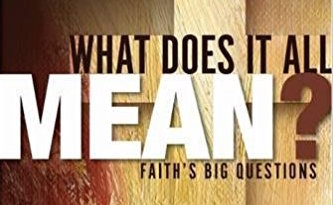What Does It All Mean? A Guide to Being More Faithful, Hopeful and Loving
By Richard Leonard SJ (Paulist Press/ Alban Books £17.99)
If Catholicism is what Catholics believe, then sometimes these days it is not what the Church purports to teach. Take for instance the question of angels. These days many Catholics believe that these are the spirits of the dead, especially the spirits of their dead children, rather than spiritual entities created before man was.
This is only one small example. From the outside it certainly seems that many Catholics hold what might be called unorthodox views hence the public controversies that arise so often. Of course religious practice and belief changes all the time, and these quirks of faith in modern Ireland may not be of real concern. What is appropriate here would be a pastoral rather than a theological approach.
But some guide to the essentials of a faith suitable for modern times and circumstances would be widely useful to young people, confused adults trying to live by what they can recall of their school catechism, or indeed some commentators of all persuasions, who are all too ready to announced with certainly what it is “that Catholics believe”.
Richard Leonard, an Australian Jesuit, in his new book provides just such a book, which will be found very useful by many readers, not all of them religious by any means.
The author, who holds a degree in theology also has a doctorate in cinema studies, and is the director of the Australian Office for Film and Broadcasting and a consultant to the Australian Catholic Bishop’s Media Council. (Alas no such entities exists here.) He is the author of Where the Hell is God?, a book which made a big impact on publications. The present book is by way of being a summation of what he had to say to the bewildered and the suffering in previous books.
Hence its four sections which begin with suggesting the grounds on which faith might be built, the challenges today in believing, the problem of evil which provides a serious barrier to many believing in a “loving God”, and finally some ideas about prayer and spirituality in everyday life in the modern world.
But unlike many books of this kind, this is not so much prescriptive, as suggestive. The arguments and ideas are illustrated by brief life vignettes, of people like St Thomas More, Oscar Romero, St Mary McKillop, St Teresa of Calcutta, the great Dorothy Day and St Ignatius Loyola. These are famous names, their stories have often been told, sometimes at great length.
They provide real life models of what the author is putting forward.
But it is the final one of these vignettes of life and faith that is the most powerful. It is the story from Leonard’s own experience of Jenny and her baby Sebastian.
It is most moving narrative from almost the lowest depths of life in Australia which cannot really be summarised without damage to its truth. But it goes to the heart of what this whole book is about. The books is worth reading for this tale alone. But it had a happy outcome after all.
“With the eyes of faith and a heart of love, the trauma of death and pain can give way to trusting that some good, any good, can emerge from evil, and life will prevail where death had been before,” the author concludes.
From years of pastoral work and the study of how we communicate our truths, Richard Leonard knows enough of life to write that “faith is not certainty”. But that being so we have in a sense to live with and for others, with mutual respect and accommodation.
Here, as I say, is a handbook for faith in modern times. Let us hope it comes into the hands of as many troubled folk as possible. But for those self-satisfied about what they believe – and there are many of them – it might also prove to be life-changing.


 Peter Costello
Peter Costello
